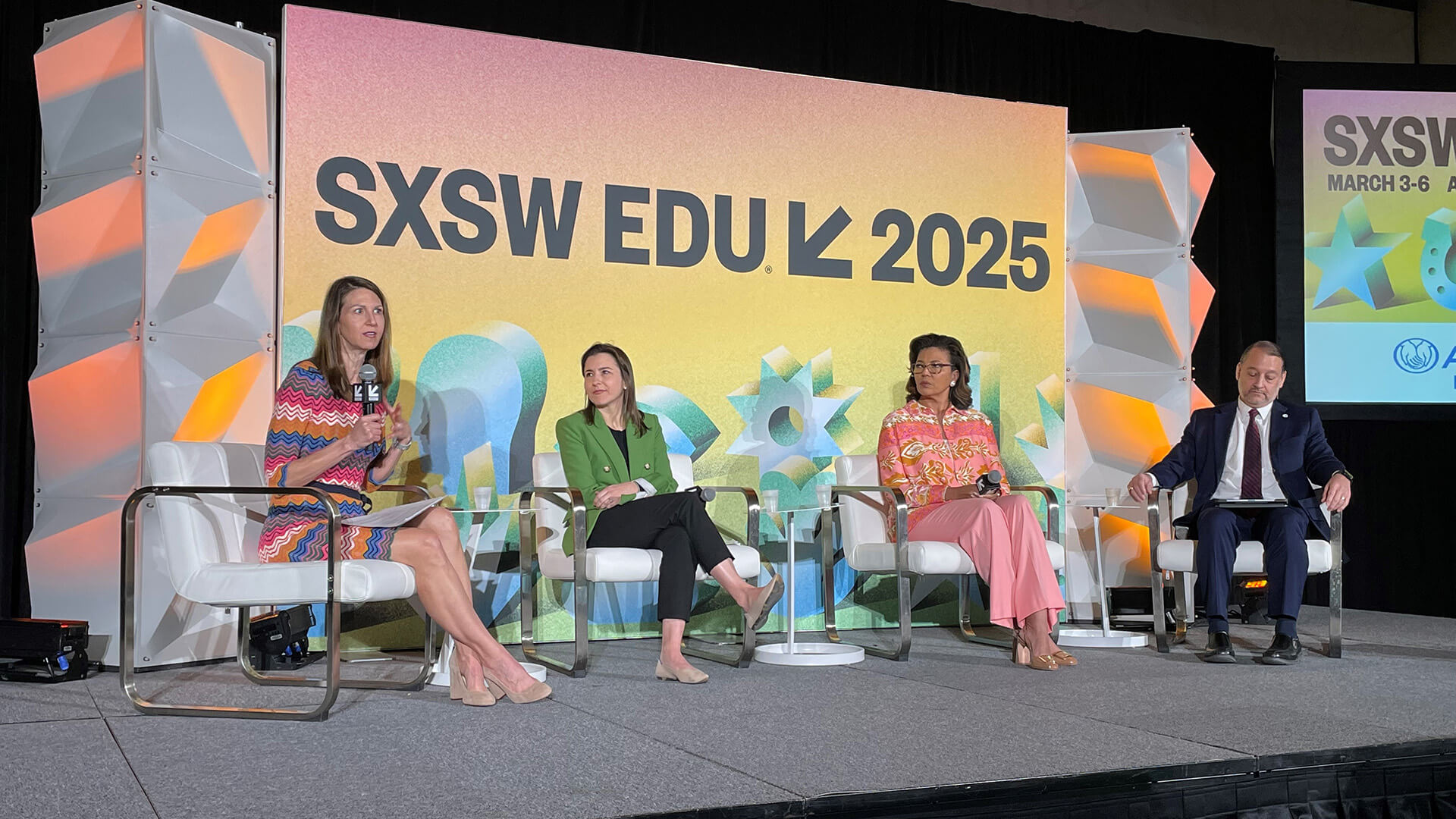Three key takeaways from South by Southwest
Public confidence in higher education is slipping. You’ve probably heard it—maybe even felt it. But here’s the thing: While skepticism is rising, most Americans still believe in the power of a college degree. They see it as a ticket to career success, financial stability, and a better future for their families.
So, why the doubt? The cost of college is overwhelming, and many people wonder if the return on investment is worth it. If higher ed wants to rebuild trust, it must address these concerns head-on—making college more accessible, more transparent, and more directly tied to career success.
At Lumina Foundation, we’re focused on making higher education work for more people. That’s why we’ve set a bold new goal: By 2040, 75% of adults in the U.S. labor force will have college degrees or other credentials leading to economic prosperity. We know that to get there, we have to listen—to students, to employers, and to communities across the country.
That’s exactly what we did last week at SXSW EDU, where I moderated a discussion with three incredible experts:
✔️ Kim Hunter Reed, Louisiana’s Commissioner of Higher Education
✔️ Stephanie Marken, Senior Partner at Gallup
✔️ William Serrata, President of the El Paso County Community College District
Together, we tackled the big question: Do students and society still value higher ed? Here are three key insights from our conversation:
1. People are losing trust in the system—but not in the outcome
Americans may be skeptical about higher education, but they still believe in what it can do for them.
According to the Gallup-Lumina State of Higher Education 2024 report:
📌 70% of adults without a degree believe a bachelor’s degree is valuable
📌 60% say the same about an associate degree
Even with doubts about the system, many expect their college investment to pay off within five to 10 years. It’s a paradox—kind of like how people feel about the health care system. They may not trust the process, but they still want access to the benefits.
As Stephanie Marken put it: “People can have very little confidence in higher education, yet they’re saying the outcome is very valuable.”
The challenge for colleges and universities? Close the trust gap. Make pathways clearer. Ensure and prove that the investment is worth it.
2. College must be affordable—full stop.
Cost is still the biggest roadblock keeping students from enrolling or completing their degrees. It’s not just tuition—it’s the life costs that come with going to school.
Some states are stepping up:
💡 Louisiana launched an adult financial aid program to help low-income students earn credentials for high-wage jobs.
💡 Texas invested $684 million in community colleges to fund short-term, job-focused programs.
But students are frustrated. Kim Hunter Reed hears it all the time: “You talk about this as a necessity, but you price it as a luxury good.”
Higher ed must respond. That means rethinking financial aid, streamlining transfer options, and offering more flexible learning models. Because if college isn’t attainable and affordable, public confidence will keep eroding.
3. Credentials have to prove their value in the workforce.
Employers still see degrees and credentials as valuable, but they also need confidence that graduates have the skills to succeed in today’s workforce. The key challenge is alignment: ensuring that educational programs keep pace with evolving industry needs.
Community colleges are leading the way, offering short-term credentials and industry-recognized certifications that provide direct pathways to employment. Programs like Texas’ P-TECH (Pathways in Technology Early College High School) are helping students graduate high school with job-ready skills—so they can start earning a living wage right away.
As William Serrata pointed out: “We used to see higher education as a public good, and now we see it as a private benefit. That shift has triggered much of the concern around its value.”
If higher ed wants to stay relevant, it has to partner with employers, build programs that develop real-world skills, and show students a clear path from classroom to career.
So, where do we go from here?
The doubts about higher education aren’t going away. The good news: The demand for learning is still there. People want education that pays off—and it’s on us to deliver it.
That means tackling cost, rethinking credentials, and proving that higher ed still works for students, workers, and society as a whole.
Let’s get to it.
Related:
- Why is Harvard University a target for President Trump? | CBS News, Boston | April 16, 2025
- College students — and those not enrolled — see the value in higher education | Higher Ed Dive | May 7, 2025
